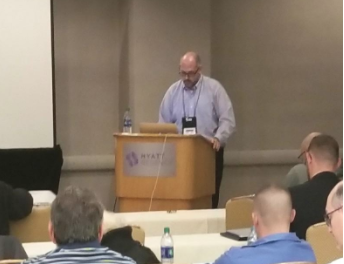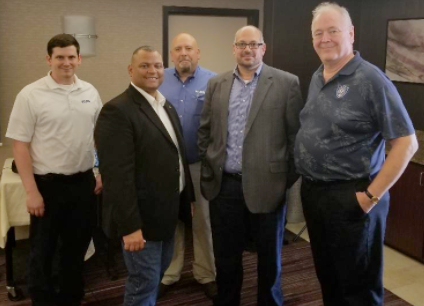Virtual reality (VR) offers unparalleled capabilities to support and facilitate forensic activities. VR is especially well suited for supporting use-cases where spatial information is critical, like accidents and crime scene reconstruction. When used appropriately, this emerging technology will be able to easily leapfrog over current alternatives.
VR is designed to trick human senses and immerse the user into a computer-generated world in a way that makes the user perceive, interact and feel like actually being there. This is referred as the sense of “presence.” In addition, the VR environment can be shared over the internet and users can interact remotely—therefore the term presence in the VR context is also referred to as telepresence. Long story short, a VR environment will make the user “feel” that he or she is at the scene.
Current needs in forensics
The administration of justice and the overall judicial process requires significant preparatory work. In general, this is a time-consuming and expensive process. Processing a crime scene is a long, tedious ordeal that involves purposeful recording and documentation of the conditions at the scene, and the collection of any physical evidence that could provide clues and help determine what happened. The most logical explanations that investigators can recreate, in many cases, can still be very confusing for most people who didn’t have the possibility of being at the scene to comprehend easily.
The current “pain points" relate to the costs and difficulties associated with replicating a scene as an investigative and demonstrative working environment. Another area where improvement offers significant value is the collaboration and communication between investigators and prosecutors.
Value of VR in forensics
To improve justice and support a fair judicial process, society needs the most powerful and cost-effective tools investigators can use across multiple types of scenes. The time is right to leverage these capabilities and provide the best tool possible for investigators and others involved in criminal justice, including prosecutors, defenders, judges and eventually jurors. It is time to allow all of them to "teleport" to a virtual crime or accident scene as needed.
Nowadays, many agencies already capture crime scenes with highly sophisticated 3D laser scanners. They not only have this 3-D raw data readily available, but they are constantly forced to translate, reproduce and communicate such abundant and relevant 3-D/spatial information into a 2-D metaphor (such as diagrams, blueprints, pictures, videos, etc.)
Early conversations and demonstrations with recognized experts in the use of forensic 3-D metrology in the private and public sector have provided very interesting and positive feedback. One expert user said: “There is a distinct need for an intuitive method for the visualization of these rich, 3-D evidence data sets. VR provides this method and does it with little additional effort.”
VR could offer investigators, prosecutors, defenders, and other stakeholders’ multiple key benefits:
Revisit the crime scene: Users would be able to quickly and cost-effectively "teleport" to the crime or accident scene, walk through the scene as many times as needed, assess as many points of view as needed, perceiving the scene as close as possible to the original incident.
Collaboration: Users would be presented with the same virtual scene and share the same collaborative space—participants from multiple specialties and from multiple locations could be given access to a virtual scene as soon as it is digitalized. Users would be able to share annotations and knowledge contributed by individuals.
Knowledge acquisition: Increased capabilities for prosecutors to learn the facts around the scene being investigated, and to become more proficient about investigative techniques, increasing capacity to communicate with other stakeholders in a more compelling and cost-efficient manner, reducing the amount of back and forth and rework.
Compliance: VR environments could enable agencies to better observe, control and report on users as they perform their investigative tasks. The immersive nature of the VR environment could facilitate the verification of required procedures. Successful completion of the required investigative tasks could be tracked and reported.
A future article will elaborate in the potential risks of VR in Forensics, as well as what we expect to be the changes in the near future.
Eduardo Neeter is the Founder and CEO of FactualVR, a startup developing a virtual reality platform to help law enforcement and prosecutors accurately replicate and communicate the facts around a crime scene. Eduardo first began working in the field of virtual reality in a Japan-based research lab 22 years ago. Eduardo is also the co-chair of the VRARA (VR/AR Association) Criminal Justice Committee.









